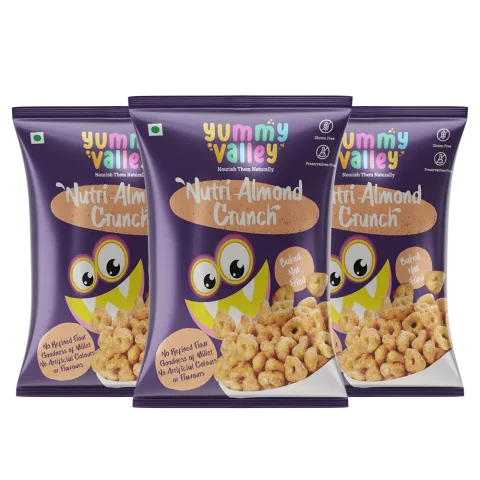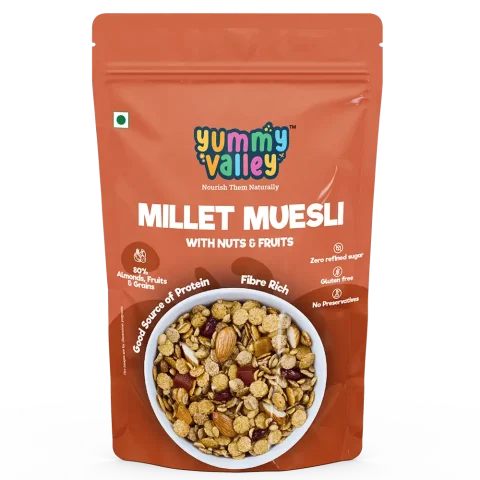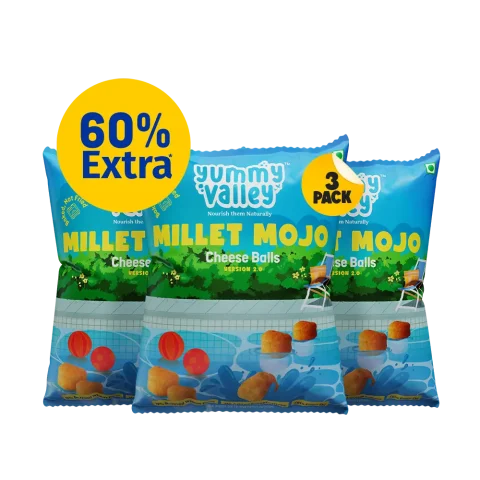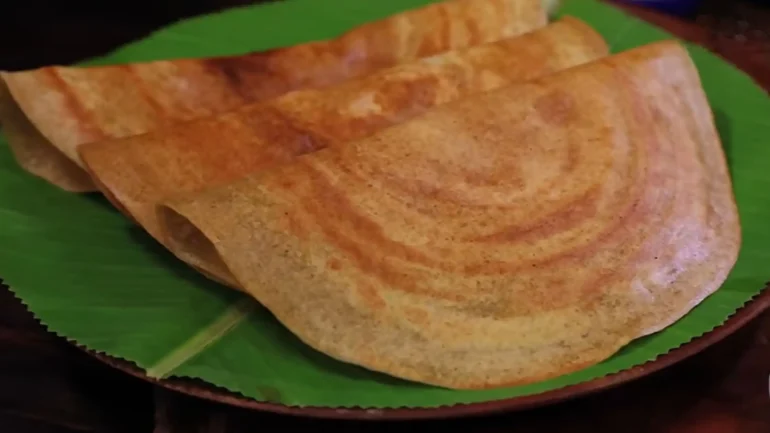Barnyard Millet: Nutrition, Benefits, Uses & Recipes
- Published on:
- Last update: 19 May 2025
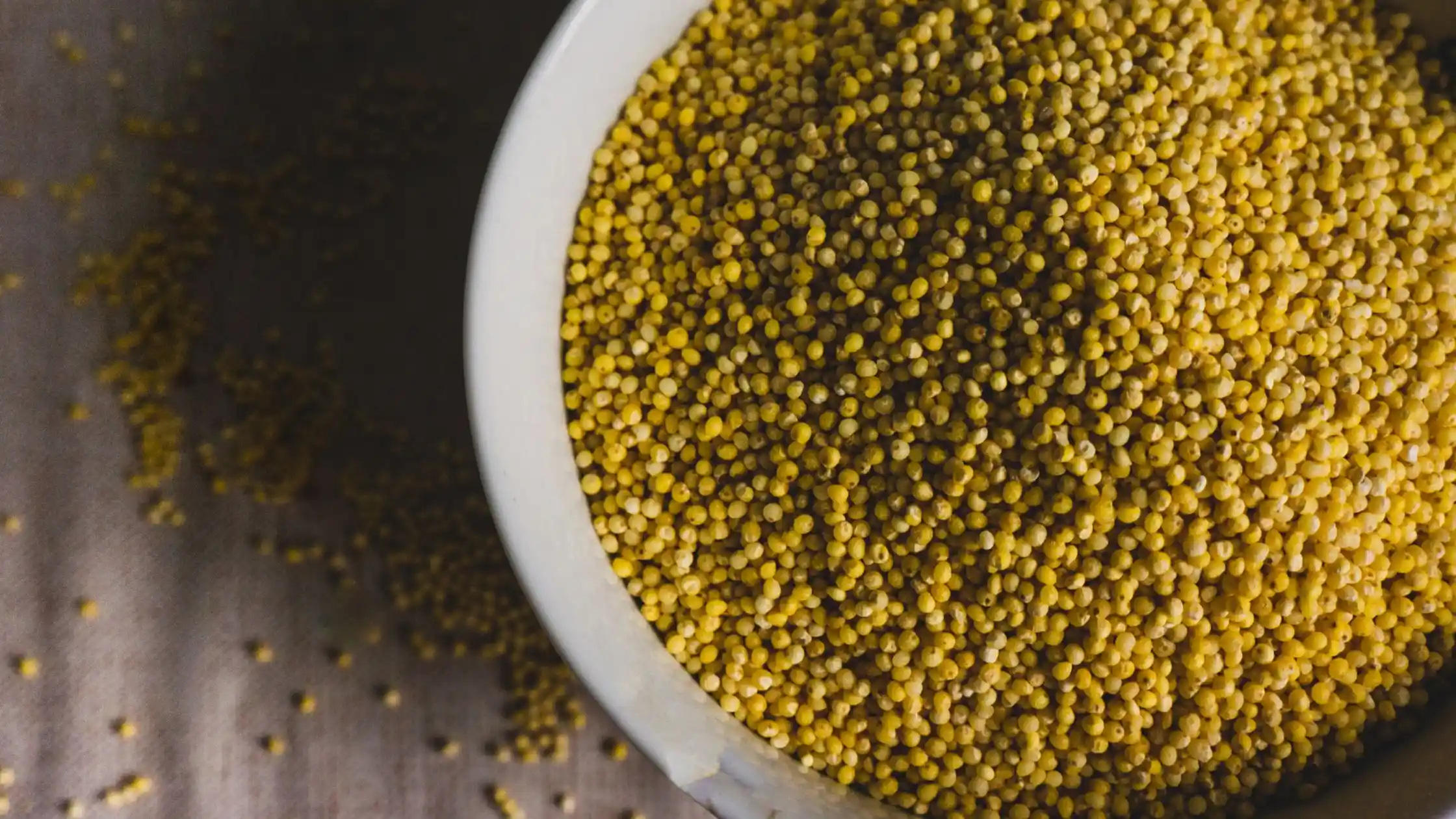
In the changing realm of nutrition and well-being, there’s been a surge, in interest towards barnyard millet. This age-old grain, often overlooked in favour of choices packs a nutritional punch with its remarkable history and numerous health advantages. As we explore the realm of grains and look for alternatives, to processed carbs barnyard millet emerges as a nutrient-rich option that truly deserves our attention. Within this blog, we explore its nutritional richness and the transformative potential it holds for boosting your health. Ready to uncover the barnyard millet benefits, nutrition, and use? Let’s get started!
What Is Barnyard Millet?
Barnyard millеt, sciеntifically known as Echinochloa еsculеnta, is a glutеn-frее anciеnt grain that has gainеd significant popularity in rеcеnt yеars duе to its nutritional bеnеfits. This rеsiliеnt cеrеal crop bеlongs to thе Poacеaе family and is cultivatеd primarily in Asia. With a rich history dating back thousands of years, barnyard millеt has bееn a staplе in traditional diеts, particularly in India and China.
Its small, round grains arе a powеrhousе of nutriеnts, boasting high lеvеls of fibеr, еssеntial minеrals such as iron and phosphorus, and a rangе of vitamins. Morеovеr, its low glycеmic indеx makеs it an еxcеllеnt choicе for thosе managing diabеtеs or sееking a nutritious altеrnativе to rеfinеd grains. Thе surgе in awarеnеss of glutеn-frее and nutriеnt-dеnsе options has propеllеd barnyard millеt into thе spotlight, making it a compеlling addition to a hеalth-conscious diеt.
Barnyard millet isn’t just delicious; it’s a powerhouse of health benefits. Packed with high fibre, iron, and phosphorus, it supports heart and kidney health. Plus, it aids in managing blood sugar, blood pressure, and cholesterol levels, making it an excellent choice for those dealing with diabetes and hypertension.
Moreover, this millet is a native grain that supports the Sattvic movement, which aims to promote food that is good for humans and the planet.
Barnyard Millet Nutritional Value per 100g
Curious about Barnyard millet’s nutritional benefits? It’s loaded with dietary fibre, iron, phosphorus, and antioxidants. What’s more, its phenol content grants it antibacterial, anti-ageing, and antibiotic properties. According to Phyto journal, here’s the barnyard millet nutritional value per 100g:
| Nutrients | Quantity |
|---|---|
| Protein | 10.5 |
| Fat | 3.6 |
| Crude Fibre | 6.6 |
| Total minerals | 2.0 |
| Total Carbohydrates | 68.8 |
| Calorific value | 398.0 |
| Total dietary fibre | 12.6 |
| Soluble dietary fibre | 4.2 |
| Insoluble dietary fibre | 8.4 |
| Phosphorus | 281 mg |
| Iron | 5 mg |
| Magnesium | 83 mg |
| Calcium | 19 mg |
Barnyard millet’s advantages aren’t just limited to a couple of health benefits; they contribute to various metabolic functions by lowering bad cholesterol and boosting good cholesterol. This supports heart health and aids in weight management.
Health Benefits Of Barnyard Millet
1. Manage type ll diabetes
Research from NCBI suggests that processed barnyard millet could aid in managing type II diabetes. Its low glycemic index and polyphenol content inhibit the breakdown of complex sugars, helping control glucose spikes associated with diabetic conditions. In essence, this millet proves beneficial for individuals managing diabetes.
2. Maintains heart health
According to IIMR’s insights on the nutritional benefits of millets, barnyard millet’s amylase retrogradation leads to increased resistant starches, potentially aiding patients with cardiovascular disease and diabetes mellitus. Additionally, its magnesium content contributes to blood pressure reduction, while its high dietary fibre works to lower bad cholesterol and boost good cholesterol levels, further benefiting heart health.
3. Fights against anaemia
Barnyard millet’s abundance of iron positions it as a great option to combat anaemia. Consuming controlled portions of this grain supplies vital nutrients crucial for a healthy metabolism. Particularly for those experiencing constant fatigue and energy deprivation due to anaemia, integrating this millet into the diet can alleviate such symptoms.
4. Skin and hair benefits
Barnyard millet offers notable advantages for skin and hair health. Its richness in phenols and flavonoids makes it an excellent source of antioxidants, ideal for maintaining skin vitality. Additionally, its iron and zinc content contribute to fostering robust hair growth.
5. Manages digestive disorders
Barnyard millet is a boon for people with gastrointestinal disorders, as it can ease many digestive problems. The substantial fibre content in the millet maintains regular and smooth bowel movements, warding off issues like constipation, acidity, bloating, and stomach cramps. Additionally, it helps reduce the risk of conditions such as colon cancer, haemorrhoids, and diverticular disease. Barnyard millet benefits your gut health by nourishing the good bacteria and enhancing your immunity.
Also Read: Finger Millet Benefits & Side Effects
Uses Of Barnyard Millet
Barnyard millet, a versatile and nutritious grain, offers itself for a range of dishes and culinary explorations. It serves well in:
- Rice: You can cook barnyard millet with water or stock and serve it with curries, dal, sambar, or any other gravy. It has a similar texture and taste to broken rice but with more health benefits.
- Porridge: Porridge is a versatile option with this millet; it can be sweet or savoury with milk or water. Boost the yum factor and get all healthy by throwing in sugar, honey, jaggery, dates, cardamom, cinnamon, nutmeg, saffron, fruits, nuts, seeds, or coconut flakes.
- Upma: For a full-on upma feast, stir up barnyard millet with mustard seeds, curry leaves, asafoetida, onion, green chillies, ginger, garlic, turmeric, and salt. Get ready for a flavour explosion! Boost its goodness by tossing in your favourite veggies like carrots, peas, beans, capsicum, or any others you fancy.
- Dosa: You can make crispy and healthy dosas with a simple batter of barnyard millet, urad dal, poha, and methi seeds. Pair these dishes with your preferred chutney, sambar, or podi for a delightful accompaniment. For an extra satisfying and flavoursome meal, consider stuffing them with potato masala, cheese, or paneer.
Barnyard Millet Recipes for Better Health
Looking for a healthy diet to aid in weight loss? Don’t stress about what to cook! Check out these inspiring recipe ideas below. They’re a breeze to whip up, needing only a few minutes, and the beauty lies in their comforting, nourishing nature packed with delightful nutrition. Here are some effortless yet flavoursome methods to introduce barnyard millet into your kitchen:
1. Barnyard Millet Dosa Recipe
Barnyard millet dosa makes for a crunchy and nutritious breakfast, simple to prepare and delightful to savour. This gluten-free, diabetic-friendly grain brims with fibre, protein, iron, and calcium, offering potential benefits like blood sugar regulation, cholesterol management, blood pressure control, improved digestion, and boosting immunity. Adding this millet dosa to your diet is an excellent means to embrace this nutritious grain and relish its advantages.
Ingredients
- 1 cup barnyard millet
- 1/4 cup urad dal
- 1/4 cup poha
- 1 teaspoon methi seeds
- Salt to taste
- Oil or ghee for frying
- Water as needed
Instructions
- Wash and soak the barnyard millet, urad dal, poha, and methi seeds in separate bowls for 4 hours.
- Drain the water and grind the millet coarsely in a mixer or grinder. Transfer to a large bowl.
- Grind the urad dal, poha, and methi seeds to a smooth paste in the same mixer or grinder. Add water as needed to get a smooth consistency. Transfer to the same bowl as the millet batter.
- Blend the two batters thoroughly and season with salt according to your taste. Cover the bowl and allow it to ferment for 8 hours or overnight in a warm spot.
- Warm up a dosa tawa or griddle and lightly coat it with oil or ghee. Ladle out that batter and swirl it around like an art pro, making a perfect circle. Sprinkle a bit of oil or ghee on the edges, then cook it up over medium-high heat till it shines gold and gets all crispy! Flip it over and cook the other side briefly. Repeat with the remaining batter.
- Serve the barnyard millet dosa hot with your choice of chutney, sambar, or podi.
Recipe Notes
- To kick things up a notch in taste, toss in some chopped green chillies, ginger, curry leaves, or cumin seeds into the batter.
- Got extra batter? No worries! Place it in an airtight container and store it in the refrigerator for up to three days. Just before dosa time, a splash of water might be needed to get that perfect consistency.
- You can also make idlis with the same batter by steaming them in idli moulds for 10 to 15 minutes.
2. Barnyard Millet Upma Recipe
Barnyard millet upma is a nourishing and fulfilling meal suitable for breakfast or lunch. Known as kuthiraivali in Malayalam, this grain is gluten-free and boasts a low glycemic index. It’s packed with fibre, protein, iron, and calcium, offering potential benefits in managing blood sugar, cholesterol, and blood pressure, and promoting improved digestion and immunity.
Barnyard millet upma is a simple and easy recipe that can be made with minimal ingredients and spices. You can also add your choice of vegetables to make them more nutritious and colourful.
Ingredients
- 1 cup barnyard millet
- 2 cups water
- 1 tbsp oil
- 1 tsp mustard seeds
- 1 tsp urad dal
- A pinch of asafoetida
- A few curry leaves
- 1 onion, finely chopped
- 2 green chillies, slit
- 1 tsp ginger-garlic paste
- 1/4 tsp turmeric powder
- Salt to taste
- 1/4 cup chopped coriander leaves
Instructions
- Wash and soak the barnyard millet in water for 30 minutes. Drain and keep aside.
- Heat oil in a pressure cooker. Add mustard seeds, urad dal, asafoetida, and curry leaves. When they splutter, add onion, green chillies, and ginger-garlic paste. Saute until the onion turns golden.
- Add turmeric powder and salt. Mix well.
- Add the soaked barnyard millet and water. Stir well and close the lid of the pressure cooker.
- Cook for 3 whistles on a high flame and then lower the flame and cook for another 5 minutes.
- Turn off the flame and let the pressure release naturally.
- Open the lid and fluff the upma with a fork. Garnish with coriander leaves.
- Serve hot with coconut chutney, sambar, or pickle.
Recipe Notes
- Feel free to incorporate your preferred vegetables like carrots, peas, beans, capsicum, or any others by finely chopping and adding them along with the onion to the upma.
- For a richer taste and aroma, opt for ghee instead of oil when preparing the dish.
- Adjust the water quantity based on your preferred consistency; barnyard millet generally requires more water than rice or other millets.
3. Barnyard Millet Fried Rice Recipe
Barnyard millet is like a super grain! It makes awesome fried rice that’s super yummy.. Swap it for rice if you want a tasty, healthy meal. Let’s cook up some barnyard millet fried rice! Here’s a quick and easy recipe you can try at home.
Ingredients
- 1 cup barnyard millet, soaked for 30 minutes and drained
- 2 cups water
- Salt to taste
- 2 tablespoons oil
- 1 teaspoon cumin seeds
- 1 onion, finely chopped
- 2 green chillies, slit
- 1/4 teaspoon turmeric powder
- 1/4 teaspoon red chilli powder
- 1/4 teaspoon garam masala
- 2 cups mixed vegetables, chopped (carrots, beans, peas, corn, etc.)
- 2 tablespoons coriander leaves, chopped
- Lemon juice to taste
Instructions
- In a pressure cooker, throw in the barnyard millet, water, and a pinch of salt. Cook until it sings out 3 whistles or turns soft and fluffy. Then, fluff it up with a fork and keep it aside. Voila!
- On medium-high heat, let the oil sizzle. Toss in those cumin seeds. Next up, add the onion and green chillies and stir until they go all golden and happy.
- Add in turmeric powder, red chilli powder, garam masala, and a pinch more salt. Give it a good stir for about a minute.
- Put veggies in the mix! Stir-fry them for 10 minutes until they’re all crisp and cooked just right.
- Gently mix in the cooked barnyard millet. Give it a good toss, and you’re all set for a taste sensation! Adjust the seasoning if needed.
- Sprinkle coriander leaves and lemon juice over the fried rice. Serve hot or pack for lunch.
Recipe Notes
- You can use any vegetables of your choice for this recipe. You can also add some paneer, tofu, chicken, or eggs for extra protein.
- Swap out the usual oil for coconut oil or ghee to crank up the flavour dial. It’s like adding a fancy hat to your dish!
- Feeling nutty? Toss in some roasted peanuts or cashews for that extra crunch and nutty goodness. It’s like a surprise party in your rice!
Side Effects Of Barnyard Millet
Barnyard millet, a nutritious grain, offers health benefits, but excess consumption may cause digestive discomfort. Those with gluten sensitivity should be cautious. Moderation ensures nutritional benefits without adverse effects.
Here, we’ll explore the potential side effects of barnyard millet and ways to mitigate them;
1. Thyroid Function
Just like its millet cousins, barnyard millet comes with a quirky feature: goitrogens! These little troublemakers can mess with your thyroid’s groove, affecting hormones that power your metabolism, growth, and all that jazz. If thyroid stuff is on your mind, chat with your doctor before diving into this millet land.
2. Digestion
Barnyard millet’s rich fibre content aids digestion and prevents constipation. If you’re not used to lots of fibre, this millet might give your tummy a bit of a surprise with things like feeling puffy, gassy, or crampy. Take it slow with this millet, drink lots of water to help your tummy, and maybe give it a good soak or sprout before cooking to make it easier on your digestion.
3. Allergy
Barnyard millet is typically safe for most individuals, yet some may experience an allergic reaction. Symptoms might encompass skin rashes, itching, swelling, or breathing difficulties. If these signs manifest after consuming this millet, discontinue its intake and promptly seek medical attention.
4. Nutrient Absorption
Barnyard millet houses phytic acid, which can hinder the absorption of minerals like iron, zinc, calcium, and magnesium. This interference may result in mineral deficiencies impacting your health. To counter this, pair barnyard millet with vitamin C-rich foods like citrus fruits, tomatoes, or peppers, as vitamin C aids mineral absorption. Alternatively, soaking, sprouting, or fermenting the millet can reduce phytic acid, thereby boosting mineral bioavailability.
Barnyard millet stands as a nutritious and delightful addition to your diet, enhancing both your health and palate. Yet, it’s wise to be mindful of potential side effects and take necessary precautions to savour the benefits of this millet without compromising your well-being.
FAQs: Barnyard Millet
What nutrients does Barnyard millet contain?
Barnyard millet packs iron, magnesium, phosphorus, phenols, flavonoids, antioxidants, and both soluble and insoluble dietary fibres. Its rich nutrient profile supports various health conditions, from blood pressure to cholesterol, weight management, and irregular bowel movements.
Does Barnyard millet aid digestion?
Certainly. The soluble and insoluble dietary fibres in Barnyard millet contribute to digestive health, relieving constipation.
How does Barnyard millet compare to rice?
Barnyard millet and rice differ in their nutritional makeup. With a low glycemic index and a wealth of essential nutrients like iron, magnesium, Vitamin B, and more, this millet is a diabetic-friendly grain, making it a preferable alternative to rice.
Is Barnyard millet a good source of protein?
Absolutely. Alongside other crucial nutrients, Barnyard millet boasts a substantial amount of protein.
What are the health perks of barnyard millet?
Barnyard millet boasts various health perks, offering ample dietary fibre, antioxidants, and potential aid for weight management. It’s also gluten-free and gentle on the stomach.
Share this post:



